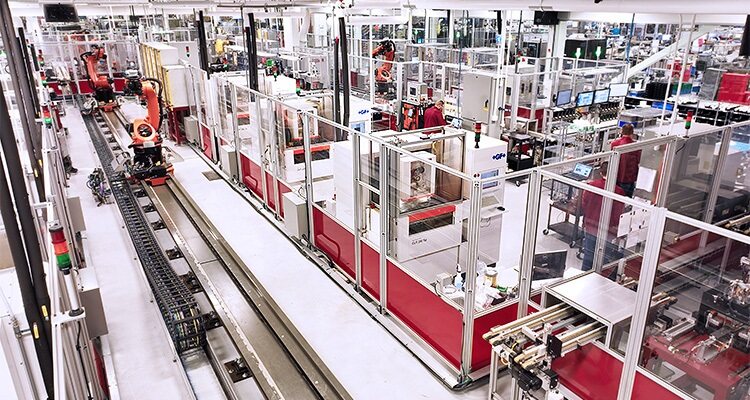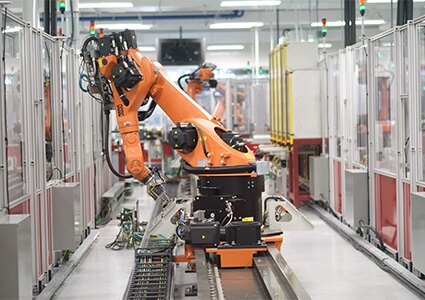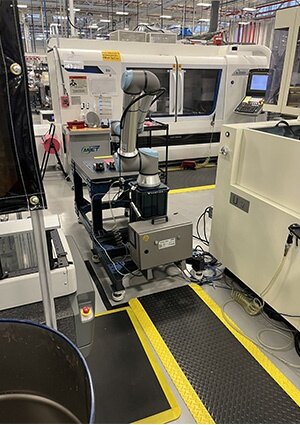
Using its decades of experience, Woodward is embracing the new era of automation
Woodward is an independent designer, manufacturer, and service provider of control solutions and system components for aircraft engines, industrial turbines, power generation, and mobile industrial equipment for the aerospace and industrial markets.
 With a 150-year history, the business is renowned for its expert knowledge and resources. It has come to be relied upon for solving issues associated with global efficiency initiatives, from reducing emissions and increasing energy efficiency to helping customers implement alternative energy sources.
With a 150-year history, the business is renowned for its expert knowledge and resources. It has come to be relied upon for solving issues associated with global efficiency initiatives, from reducing emissions and increasing energy efficiency to helping customers implement alternative energy sources.
“Our business is split into two segments– industrial and aerospace – both of which produce motion controls for the respective industries,” begins Michael Benner, Senior Vice President of Operations for the Aerospace segment. “To put it simply, we make motion controls for the engine as opposed to the engine itself. It all started in 1870 when Amos Woodward, our original founder, began with his creative invention of an improved non-compensating governor waterwheel.
“Quickly fast-forward 50 years to the 1930s, and Woodward began to develop a string of innovations within the growing aviation industry. At that time, the industry was facing increased market demands, resulting in the company expanding its product line to include diesel engine controls and aircraft propeller governors. Our business grew tremendously, especially in the Rockford, Illinois, area.
“Then, during World War II, the turbo jet engine was invented in Britain and gradually made its way to the US. GE Aerospace (GE) was a key industrial partner for developing the jet engine in the US and we’re fortunate to still have a strong working relationship with them today. We’ve come to supply components to almost all major jet engine manufacturers, as well as air frames and flight controls to companies like Boeing and Airbus.
“We went from designing products to providing physical system solutions to our customers,” Michael continues. “Such system value is created by a strong design philosophy and our dedicated team of experts. We’re renowned for our design process, but we also combine that with an in-house supply base and complex manufacturing processes to deliver effective solutions.
“Our most recent area of interest and growth is in space. With the recent commercialization of travelling to space, demand in this area is rapidly growing. While all our activity is centered around motion controls, we have specific products that provide propulsion, thrust, and other controls to space vehicles.”
Reflecting on what makes Woodward unique, Michael states: “The performance and quality of the products we provide is second-to-none, but it’s our management structure that sets us apart from other businesses. We don’t refer to ourselves as employees, but rather, ‘members,’ to reflect how much our management team values each individual. It’s even codified in what we call our Woodward Constitution, a key document that explains the value we provide to customers, stakeholders, and suppliers, but above all, our members.”
Process technology revolution
Kenny Lynch, Vice President of Supply Chain for Aerospace, adds: “That’s what drew me to Woodward – it’s a 150-year-old company that not only includes members, customers, and shareholders, but also suppliers. This makes a big difference when managing a supply base that is fragmented because of numerous acquisitions.
“In aerospace and industrial, for example, we have over 1300 active suppliers,” he continues. “We separate these into categories like machining, engineered components, electronics, and distribution partners. From an internal standpoint, we’re embracing automation to maximize our capability to react to the ‘new normal’ when it comes to direct labor. We’ve established continuous improvement teams to assist our critical suppliers on their own automation journeys too, which includes visits to our facilities.”
In support of Kenny’s point, Michael explains: “Our Rock Cut Campus set the bar for Factory 4.0. This greenfield manufacturing site opened in 2015. We’re experiencing a process technology revolution, especially with new digital factory and machining platforms. It extends from the typical ERP system we use to communicate with suppliers and understand demand forecast, all the way down to automated processes that digitally capture data to feed it back to the machining center for analysis.
“We’re able to remotely monitor machine status, for example, as well as measure coolant temperature or concentration levels using sensors. In the past, we’d have to rely on an individual member to relay the status and conduct analysis to recognize when coolant levels reached a critical point, whereas engineers can now monitor levels remotely and be alerted when the threshold is met.
“We’re continuously adding signals and sensors as part of our digital factory roadmap,” he continues. “At the same time, we’re also using a manufacturing information system to provide digital work instructions to our members, which dramatically reduces the time it takes to train newly hired people, meaning they could be building complex aerospace parts in a consistent and controlled way within a matter of weeks!
Training and development
“Robots are also helping us within our factories, particularly collaborative robots, otherwise known as cobots. We have around 40 industrial robots and cobots, that are able to work safely next to a human, as well as automatically guided vehicles that move material throughout the plant. With automation completing repetitive, standard processes, these types of digital technology are key to enabling our members to instead focus on value-add activities.”
While automation plays a crucial role in optimizing the efficiency of Woodward’s operations, Michael comments on the additional benefits it brings. “Automation is also helping us to attract new talent in an increasingly difficult labor market. It has positive implications when it comes to safety, quality, and cost, as we can automate processes where there are potential ergonomic issues or safety risks. These sophisticated processes make us a more attractive employer to new talent.
“Our member base has grown significantly since the end of the Covid-19 pandemic. We’ve hired around 1600 people in our aerospace division, which makes up around 31 percent of our current population. We’re supporting those individuals with a significant budget for training and development, which includes on-the-job training and all the necessary skills and certifications to meet aerospace requirements. In addition, training and development enables members to further develop their skills and capabilities, set rewarding career paths, and feel a sense of inclusion and belonging.
Succession planning
“As part of this commitment to personal development, we focus on internal leadership training from our CEO to our supervisors. We also have a program tailored to women in leadership roles, which specifically helps women unlock potential interesting career paths within the organization. Our commitment to development sets us apart from competitors not only because it helps to attract new talent, but also as it demonstrates our ability to transfer knowledge between members.”
As our conversation draws to a close, talk turns to the future of Woodward. “We’re currently in a strong business cycle, with many of our customers experiencing huge amounts of pent-up demand and increased forecasts,” Michael concludes. “To continue fulfilling such demand, we will work collaboratively with our supply partners and keep up to date with technological advancements to improve overall performance and enhance operations in terms of efficiency and higher operating pressures.”
Kenny adds: “As well as advancing our technology, we are also focusing on developing not only our current leaders, but also the future leaders that will take the business through commercial aerospace markets in the future, as well as emerging markets like commercial space exploration. 2024 will be an important year to kick off what will be an exciting few years for our members.”